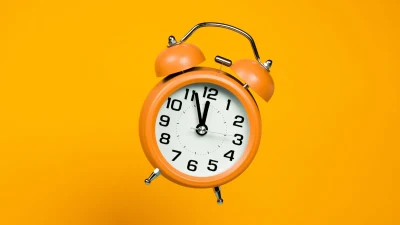Bankruptcy: hanging on to what you’ve got
It is likely that bankruptcy will be an ongoing issue as the financial crisis continues. Anyone who runs a business, is highly geared, or has significant credit card debt and experiences cash-flow problems may become bankrupt.
Bankruptcy is not something most of us would like to experience, with the consequences including:
- loss of control of your financial affairs;
- difficulty obtaining credit;
- banning from certain occupations, from holding certain licences and from being a company director and trustee of a super fund; and
- difficulty travelling overseas.
Generally, basic furniture and effects — excluding valuable antiques, paintings and valuable jewellery — are protected and cannot be acquired by the bankruptcy trustee. A vehicle used as a means of transport (eg, car or motorbike) and tools of trade are protected up to certain limits (indexed annually). Property held in trust for others is also generally protected.
Superannuation
Accounts, contributions and withdrawals
An individual’s accumulated benefits held in a super fund are treated differently to most other assets in the event of bankruptcy (or after the date of bankruptcy).
The balance of a member’s superannuation account held in a regulated super fund is protected in bankruptcy.
This means that, generally, it is not recoverable by the trustee in bankruptcy and will not become part of the property that is divisible among creditors.
However, there are circumstances in which certain contributions made to a super fund may be recoverable and included in divisible property.
Contributions include those made by the individual or a third party on behalf of the individual. Contributions by a third party could include employer contributions such as salary sacrifice.
Where contributions to a super fund are made before bankruptcy and a court determines that the contributions were made with the main purpose of defeating creditors, these may be recoverable by the trustee in bankruptcy.
This eliminates the potential for individuals to contribute amounts to superannuation just before filing for bankruptcy to remove assets available to the trustee in bankruptcy to distribute to creditors. Genuine contributions to superannuation for retirement income purposes will be protected from recovery.
A contribution made with the main purpose of defeating creditors is one made where the individual was either insolvent, or about to become insolvent.
In determining whether the main purpose was to defeat creditors, a court will consider whether the contribution was part of an established, regular pattern of contributions or whether it was out of character.
Establishing a pattern of planned contributions for genuine retirement purposes may help to ensure superannuation is protected from creditors.
Assets contributed in specie (in lieu of cash) are protected from the bankruptcy trustee (subject to the provisions relating to contributions to defeat creditors).
Lump sum payments from a regulated superannuation fund are also protected from the bankruptcy trustee on or after the date of bankruptcy.
Pensions and pension payments
Similar to accumulated superannuation benefits, the capital of a superannuation income stream (eg, an allocated pension) is protected from bankruptcy. However, income (pension) payments will be treated as ordinary income and may be caught under the normal bankruptcy provisions.
Superannuation death benefits
The bankruptcy trustee cannot recover lump sums that have already been paid out by the superannuation trustee, for example, as a result of the bankrupt’s death. However, superannuation pensions paid on death to third parties such as spouses and children may not be protected.
Lump sum proceeds from a super fund (including life insurance) paid upon death to a bankrupt’s estate are protected from creditors.
If, however, a bankrupt is a beneficiary of a lump sum death benefit paid from a deceased estate, the payment may not be protected.
The death benefit could instead be paid into a testamentary trust, paid as a lump sum from super or paid as a pension (as only income above certain thresholds is accessible to the bankruptcy trustee). Remember though that death benefits can only be paid as a pension to dependants.
All social security pensions and benefits are protected in bankruptcy.
Insurance
Life insurance/TPD policies
The cash value or proceeds of life insurance and total and perrmanent disability (TPD) policies are protected from creditors in some circumstances. Policies and proceeds of a life and/or TPD insurance policy in respect of the bankrupt or the bankrupt’s spouse are protected from claims by a creditor (on or after the date of bankruptcy).
The protection for life/TPD insurance policies exists so that a bankrupt can insure themselves and their family against death and disability.
Income protection policies
Payments from an income protection policy held either inside or outside super may be caught by the bankruptcy provisions and recoverable by the bankruptcy trustee.
Payments to the bankruptcy trustee
A bankrupt is required to make regular payments or ‘contributions’ to the bankruptcy trustee for the benefit of creditors where their net income is above a certain threshold.
Income includes:
- salary and wages;
- salary sacrifice arrangements (including superannuation); and
- voluntary employer superannuation contributions in excess of those required under Super Guarantee, industrial award or law;
- a superannuation pension or annuity;
- value of fringe benefits from employers;
- payments made on termination of employment; and
- a pension or annuity paid under a policy of life insurance.
Fifty per cent of assessable income in excess of the ‘actual income threshold amount’ must be contributed to the bankruptcy trustee.
This is calculated according to the following formula: assessed income minus the actual income threshold amount divided by two.
The actual income threshold amount is based on the ‘base income threshold amount’ of $41,823.60 (current to September 19, 2009) and increases depending on the bankrupt’s number of dependants (see case study).
Capital gains tax and bankruptcy
There are no capital gains tax (CGT) issues when a bankrupt’s assets pass to the trustee in bankruptcy. If a CGT asset is subsequently sold by the trustee, any capital gain arising is deemed to be made by the bankrupt, not the trustee.
Case study
On July 1, 2009, Ken (no dependants) anticipates his gross income for the first 12 months of his bankruptcy will be $65,000.
Net income is $50,675.
Calculation of contribution liability:
($50,675 — $41,823.60) ÷ 2
= $4,425.70
Sarina Ruffo is a technical services consultant at Suncorp Life.
Recommended for you
ASIC has released the results of its first adviser exam to be held in 2025, with 241 candidates attempting the test.
Quarterly Wealth Data analysis has uncovered positive improvements in financial adviser numbers compared with losses in the prior corresponding period.
Holding portfolios that are too complex or personalised can be a detractor for acquirers of financial advice firms as they require too much effort to maintain post-acquisition.
As the financial advice profession continues to wait on further DBFO legislation, industry commentators have encouraged advisers to act now in driving practice efficiency.














